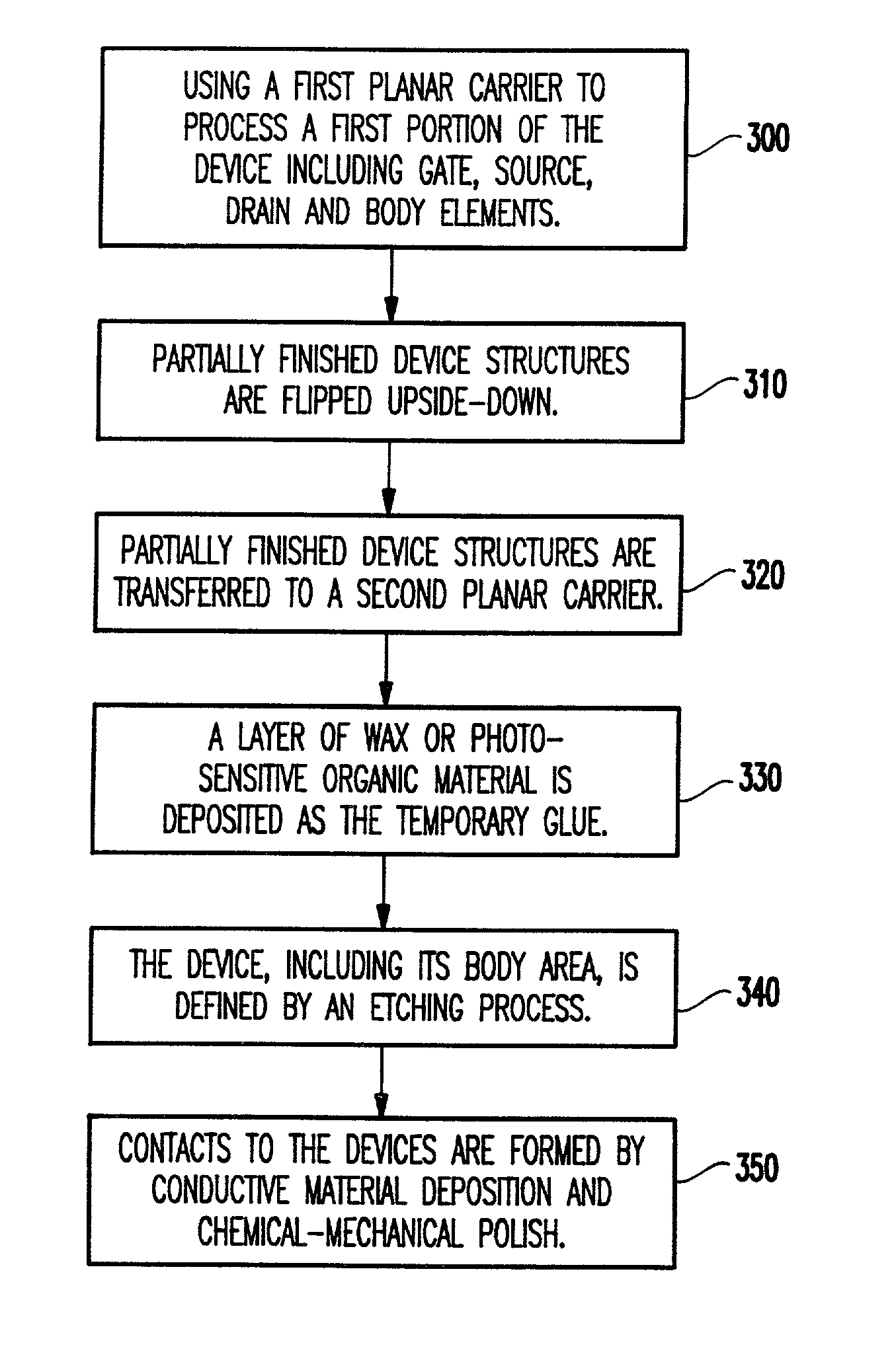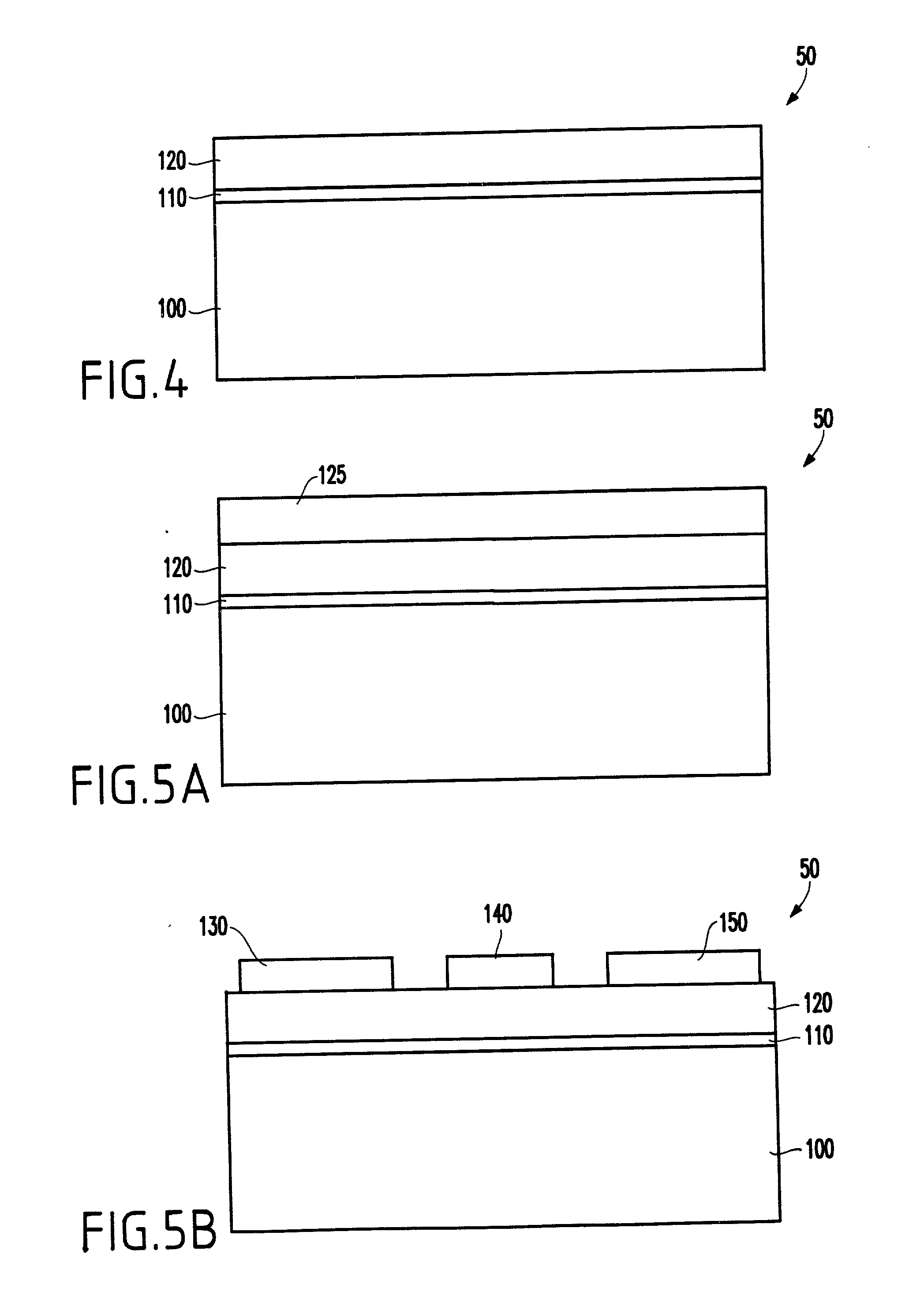Method of forming a planar polymer transistor using substrate bonding techniques
a polymer transistor and substrate technology, applied in the direction of thermoelectric device junction materials, semiconductor devices, electrical equipment, etc., can solve the problems of inability to meet the requirements of use, the most sensitive portion of the body element is exposed to process-induced contamination, and the device has poor performance and inconsistent properties
- Summary
- Abstract
- Description
- Claims
- Application Information
AI Technical Summary
Problems solved by technology
Method used
Image
Examples
Embodiment Construction
[0035] As mentioned above, there is a need for an improved structure and method for producing a planar polymer transistor which does not have the problems inherent with the prior art devices, such as the corner thinning problem due to topography, and having the most sensitive portion of the body element exposed to process-induced contamination. According to the present invention, a new and improved structure of a thin-film transistor is disclosed, as well as a method for producing the same.
[0036] Referring now to the drawings, and more particularly to FIGS. 4 through 11, there are shown preferred embodiments of the method and structures according to the present invention. Specifically, FIG. 4 shows a partially completed thin-film transistor device 50 comprising an insulating polymer 120 coated on top of a thin layer of wax 110 formed on a substrate carrier 100. The thin layer of wax 110 allows for the ease of material transference at a later stage. The substrate 100 can be glass, ce...
PUM
 Login to View More
Login to View More Abstract
Description
Claims
Application Information
 Login to View More
Login to View More - R&D
- Intellectual Property
- Life Sciences
- Materials
- Tech Scout
- Unparalleled Data Quality
- Higher Quality Content
- 60% Fewer Hallucinations
Browse by: Latest US Patents, China's latest patents, Technical Efficacy Thesaurus, Application Domain, Technology Topic, Popular Technical Reports.
© 2025 PatSnap. All rights reserved.Legal|Privacy policy|Modern Slavery Act Transparency Statement|Sitemap|About US| Contact US: help@patsnap.com



